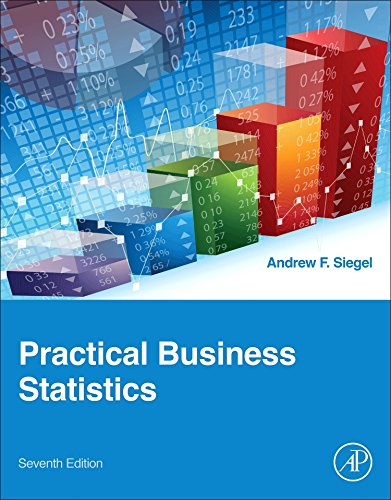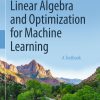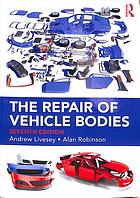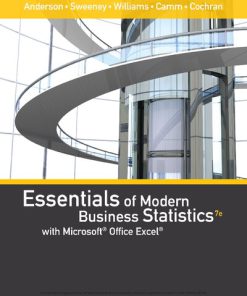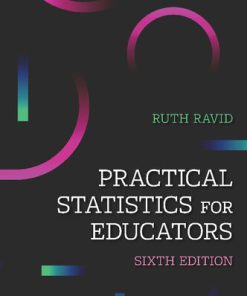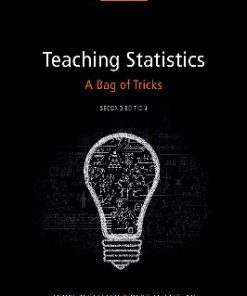Practical Business Statistics 7th Edition by Andrew Siegel ISBN 0128111755 9780128111758
$50.00 Original price was: $50.00.$25.00Current price is: $25.00.
Practical Business Statistics 7th Edition by Andrew Siegel – Ebook PDF Instant Download/Delivery: 0128111755, 9780128111758
Full download Practical Business Statistics 7th Edition after payment
Product details:
ISBN 10: 0128111755
ISBN 13: 9780128111758
Author: Andrew Siegel
Practical Business Statistics, Seventh Edition, provides a conceptual, realistic, and matter-of-fact approach to managerial statistics that carefully maintains, but does not overemphasize mathematical correctness. The book provides deep understanding of how to learn from data and how to deal with uncertainty while promoting the use of practical computer applications. This valuable, accessible approach teaches present and future managers how to use and understand statistics without an overdose of technical detail, enabling them to better understand the concepts at hand and to interpret results.
The text uses excellent examples with real world data relating to business sector functional areas such as finance, accounting, and marketing. Written in an engaging style, this timely revision is class-tested and designed to help students gain a solid understanding of fundamental statistical principles without bogging them down with excess mathematical details.
- Provides users with a conceptual, realistic, and matter-of-fact approach to managerial statistics
- Offers an accessible approach to teach present and future managers how to use and understand statistics without an overdose of technical detail, enabling them to better understand concepts and to interpret results
- Features updated examples and graphics (200+ figures) to illustrate important applied uses and current business trends
- Includes robust ancillary instructional materials such as an instructor’s manual, lecture slides, and data files to save you time when preparing for class
Practical Business Statistics 7th Table of contents:
Part I: Introduction and Descriptive Statistics
Introduction
Chapter 1: Introduction: Defining the Role of Statistics in Business
Abstract
1.1 Why Statistics?
1.2 What is Statistics?
1.3 The Five Basic Activities of Statistics
1.4 Data Mining and Big Data
1.5 What is Probability?
1.6 General Advice
1.7 End-of-Chapter Materials
Chapter 2: Data Structures: Classifying the Various Types of Data Sets
Abstract
2.1 How Many Variables?
2.2 Quantitative Data: Numbers
2.3 Qualitative Data: Categories
2.4 Time-Series and Cross-Sectional Data
2.5 Sources of Data, Including the Internet
2.6 End-of-Chapter Materials
Chapter 3: Histograms: Looking at the Distribution of Data
Abstract
3.1 A List of Data
3.2 Using a Histogram to Display the Frequencies
3.3 Normal Distributions
3.4 Skewed Distributions and Data Transformation
3.5 Bimodal Distributions With Two Groups
3.6 Outliers
3.7 Data Mining With Histograms
3.8 End-of-Chapter Materials
Chapter 4: Landmark Summaries: Interpreting Typical Values and Percentiles
Abstract
4.1 What is The Most Typical Value?
4.2 What Percentile is it?
4.3 End-of-Chapter Materials
Chapter 5: Variability: Dealing with Diversity
Abstract
5.1 The Standard Deviation: The Traditional Choice
5.2 The Range: Quick and Superficial
5.3 The Coefficient of Variation: A Relative Variability Measure
5.4 Effects of Adding to or Rescaling the Data
5.5 End-of-Chapter Materials
Part II: Probability
Introduction
Chapter 6: Probability: Understanding Random Situations
Abstract
6.1 An Example: is it Behind Door Number 1, Door Number 2, or Door Number 3?
6.2 How Can You Analyze Uncertainty?
6.3 How Likely is An Event?
6.4 How Can You Combine Information About More Than One Event?
6.5 What is the Best Way to Solve Probability Problems?
6.6 End-of-Chapter Materials
Chapter 7: Random Variables: Working with Uncertain Numbers
Abstract
7.1 Discrete Random Variables
7.2 The Binomial Distribution
7.3 The Normal Distribution
7.4 The Normal Approximation to the Binomial
7.5 Two Other Distributions: The Poisson and The Exponential
7.6 End-of-Chapter Materials
Part III: Statistical Inference
Introduction
Chapter 8: Random Sampling: Planning Ahead for Data Gathering
Abstract
8.1 Populations and Samples
8.2 The Random Sample
8.3 The Sampling Distribution and the Central Limit Theorem
8.4 A Standard Error is an Estimated Standard Deviation
8.5 Other Sampling Methods
8.6 End-of-Chapter Materials
Chapter 9: Confidence Intervals: Admitting That Estimates Are Not Exact
Abstract
9.1 The Confidence Interval for a Population Mean or a Population Percentage
9.2 Assumptions Needed for Validity
9.3 Interpreting a Confidence Interval
9.4 One-Sided Confidence Intervals
9.5 Prediction Intervals
9.6 End-of-Chapter Materials
Chapter 10: Hypothesis Testing: Deciding Between Reality and Coincidence
Abstract
10.1 Hypotheses Are Not Created Equal!
10.2 Testing the Population Mean Against a Known Reference Value: The t-Test
10.3 Interpreting a Hypothesis Test
10.4 One-Sided Testing
10.5 Testing Whether or not a New Observation Comes From the Same Population
10.6 Testing Two Samples
10.7 End-of-Chapter Materials
Part IV: Regression and Time Series
Introduction
Chapter 11: Correlation and Regression: Measuring and Predicting Relationships
Abstract
11.1 Exploring Relationships Using Scatterplots and Correlations
11.2 Regression: Prediction of One Variable From Another
11.3 End-of-Chapter Materials
Chapter 12: Multiple Regression: Predicting One Variable From Several Others
Abstract
12.1 Interpreting the Results of a Multiple Regression
12.2 Pitfalls and Problems in Multiple Regression
12.3 Dealing With Nonlinear Relationships and Unequal Variability
12.4 Indicator Variables: Predicting From Categories
12.5 End-of-Chapter Materials
Chapter 13: Report Writing: Communicating the Results of a Multiple Regression
Abstract
13.1 How to Organize Your Report
13.2 Hints and Tips
13.3 Example: A Quick Pricing Formula for Customer Inquiries
13.4 End-of-Chapter Materials
Chapter 14: Time Series: Understanding Changes Over Time
Abstract
14.1 An Overview of Time-Series Analysis
14.2 Trend-Seasonal Analysis
14.3 Modeling Cyclic Behavior Using Box-Jenkins ARIMA Processes
14.4 End-of-Chapter Materials
Part V: Methods and Applications
Introduction
Chapter 15: ANOVA: Testing for Differences Among Many Samples and Much More
Abstract
15.1 Using Box Plots to Look at Many Samples at Once
15.2 The F Test Tells You If the Averages are Significantly Different
15.3 The Least-Significant-Difference Test: Which Pairs are Different?
15.4 More Advanced ANOVA Designs
15.5 End-of-Chapter Materials
Chapter 16: Nonparametrics: Testing with Ordinal Data or Nonnormal Distributions
Abstract
16.1 Testing the Median Against a Known Reference Value
16.2 Testing for Differences in Paired Data
16.3 Testing to See if Two Unpaired Samples are Significantly Different
16.4 End-of-Chapter Materials
Chapter 17: Chi-Squared Analysis: Testing for Patterns in Qualitative Data
Abstract
17.1 Summarizing Qualitative Data by Using Counts and Percentages
17.2 Testing if Population Percentages are Equal to Known Reference Values
17.3 Testing for Association Between Two Qualitative Variables
17.4 End-of-Chapter Materials
Chapter 18: Quality Control: Recognizing and Managing Variation
Abstract
18.1 Processes and Causes of Variation
18.2 Control Charts and How to Read Them
18.3 Charting a Quantitative Measurement with X¯ and R Charts
18.4 Charting the Percent Defective
18.5 End-of-Chapter Materials
People also search for Practical Business Statistics 7th:
practical business statistics
practical business statistics 8th edition pdf
practical business statistics 8th edition
practical business statistics pdf
practical business statistics siegel
Tags:
Andrew Siegel,Practical Business,Statistics
You may also like…
Engineering - Automotive
The Repair of Vehicle Bodies 7th Edition by Andrew Livesey ISBN 1351230638 9781351230636
Business & Economics
Politics & Philosophy - Government & Politics
Mathematics
Mathematics


